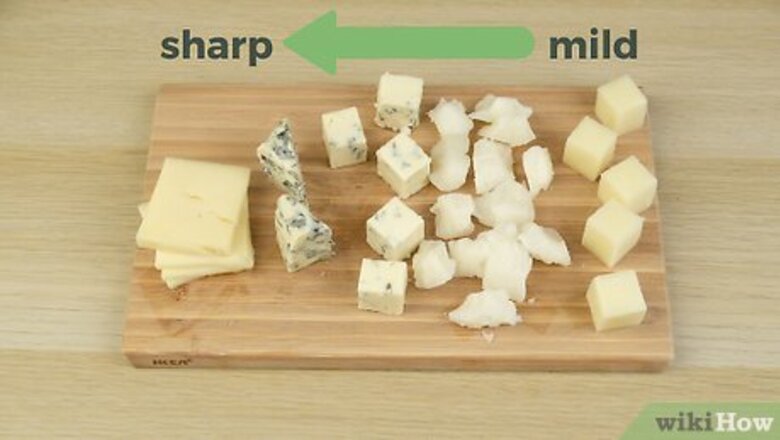
views
Knowing the Basics
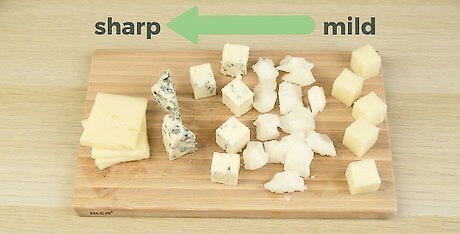
Eat cheese from mildest to strongest if it is served on a platter. In general, soft, creamy cheeses are milder than hard ones. If you are unsure which cheese is mild and which cheese is sharp, ask the host. If you start out with a sharp cheese, your taste buds will be overwhelmed, and you might miss out on the underlying flavors of any mild cheese you eat afterwards. Make sure that you use a different knife for different types of cheese so that you don't mix flavors.
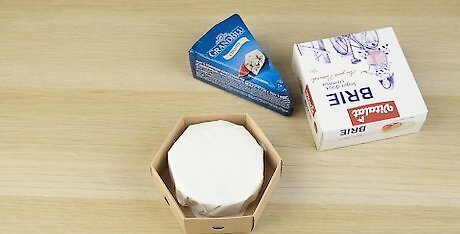
Eat cheese at room temperature to help bring out the flavors and textures. About an hour before you plan on serving or eating the cheese, take it out of the fridge, but keep it in its wrapper so that it doesn't dry out. Keep in mind that in warmer climates, the cheese will reach room temperature sooner. You don't want the cheese to become so warm that it starts to melt and "sweat." Take hard cheeses, such as Cheddar, out of the fridge an hour to an hour and a half before serving/eating. Take soft, creamy cheeses, such as Brie, out of the fridge two to three hours before serving/eating. Take fresh cheeses, such as cottage cheese, out of the fridge 30 minutes before serving/eating.
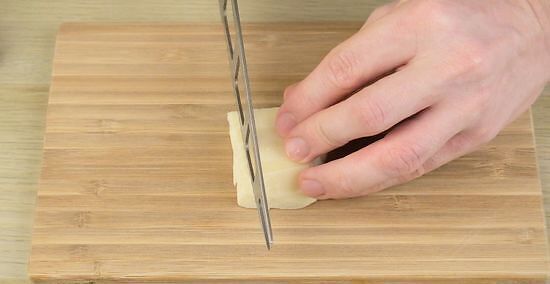
Peel or cut the rind off of hard cheeses. The rind is usually hard and waxy. Examples of cheeses where you should peel/cut the rind off include Edam, Gruyere, and Romano.
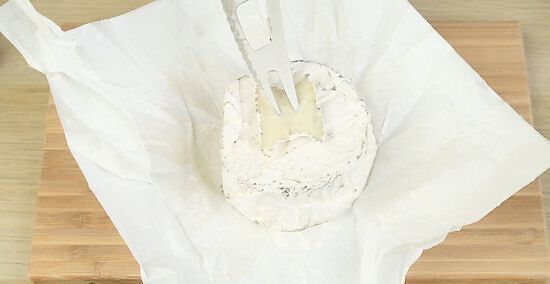
Don't be afraid to eat the rind from soft, creamy cheeses. This rind is usually soft and white. Examples of cheeses where you can eat the rind include Camembert and Brie.
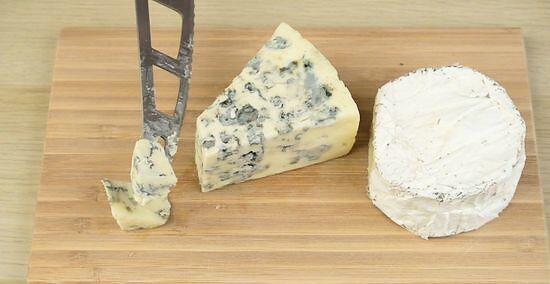
Consider sniffing the cheese discretely before you eat it. Just don't make a huge show of it. Smelling is a big part of tasting. It can actually help intensify the taste of the cheese.
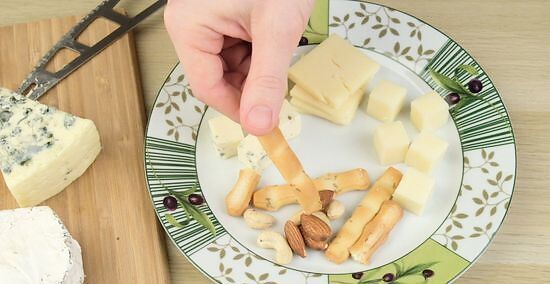
Use bread and crackers sparingly, and mostly as a palate cleanser. When you smoosh cheese onto bread or crackers, you tamper with the unique flavor of the cheese. If you really want to appreciate the taste of the cheese, eat it alone.
Pairing Cheese with Wine
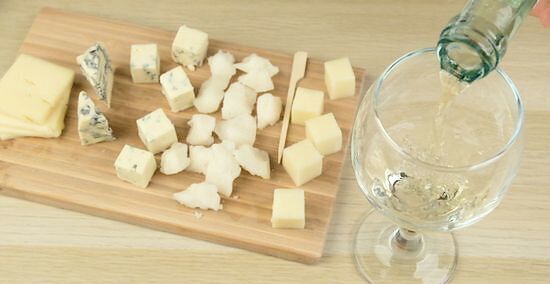
Know how to pair wine and cheese. Wine makes a perfect accompaniment to cheese. It can help bring out its flavors. There are certain types of wines, however, that work better with certain types of cheese. This section will give you some tips and ideas on how to most effectively pair wine with cheese.
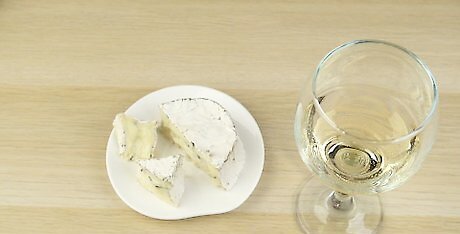
Pair soft and fresh cheeses with crisp white wines. You can also pair them with dry aperitif wines, dry Rosé wines, sparkling wines, and light-bodied reds that have low tannins. Avoid tannic red wines, such as Bordeaux, Bordeaux blends, Cabernet Sauvignon, and Malbec. Examples of soft and fresh cheeses include Brie, Brillat-Savarin, Bûcheron, Burrata, Camembert, Chèvre, Crottin, Feta, Halloumi, Mozzarella, and Ricotta. Wines that go will with soft and fresh cheeses include Albariño, Beaujolais, Cava, Chablis, Chardonnay (unoaked), Champagne, Chenin Blanc, Fino sherry, Gewürztraminer, Grüner Veltliner,Lambrusco, Moscato, Pinot Grigio, Pinot Gris, Provençal rosé, Riesling (dry to sweet), Sauvignon Blanc, and White Port.
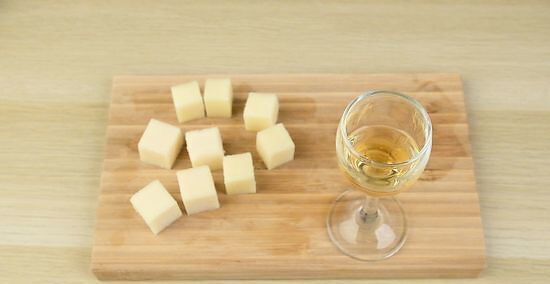
Pair semi-hard and medium-aged cheeses with medium-bodied wines. You can also pair them with fruity red wines and vintage sparkling wines. Aperitif wines that have a mixture of acidity, fruity undertones, and tannins also work. Examples of semi-hard and medium-aged cheeses include Edam, Emmental, Gruyère, Havarti, Jarlsberg, Manchego, Monterey Jack, Tomme d'Alsace, and young Cheddar. Wines that go well with semi-hard and medium-aged cheeses include Amontillado sherry, Barbera, Beaujolais, Champagne, Chardonnay, Dolcetto, Gewürztraminer, Merlot, Pinot Blanc, Pinot Noir, red Burgundy, Riesling (off-dry), Tawny Port (young), white Bordeaux, white Burgundy, white Rhône blends, Viognier, vintage Port, and Zinfandel.
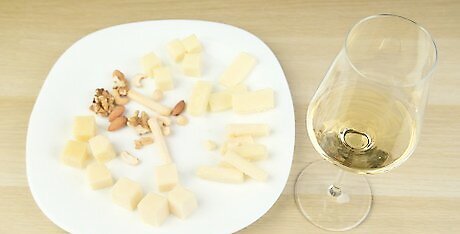
Pair hard, aged cheeses with full-bodied white wines. Tannic red wines and oxidative wines also work. These wines help off-set the cheese's strong, often nutty flavors. Examples of hard, aged cheeses include Aged/mature Cheddar, Asiago, Cheshire, Comté, aged Gouda, aged Gruyère, Manchego, Parmigiano Reggiano, and Pecorino. Wines that go well with of hard, ages cheeses include Aged white Burgundy or Bordeaux, Barbaresco, Barolo, Cabernet Sauvignon, California red blends, Madeira, Nebbiolo, Oloroso sherry, Petite Sirah, red Burgundy, red Bordeaux, red Port, red Rhône blends, Sauternes, sweet Riesling, Tawny Port, white Rhône blends, Viognier, Vin Jaune, vintage Champagne, and Zinfandel.
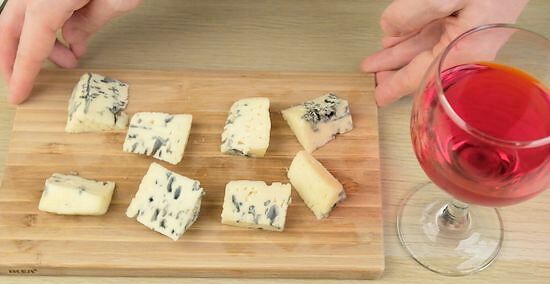
Pair salty, blue cheeses with sweet wines. This helps create a delightful contrast that brings out the best flavors of both the wine and the cheese. Blue cheeses are instantly recognizable for their blue-veined texture and salty taste. Examples of blue cheeses include Bleu d'Auvergne, Cambozola, Gorgonzola, Roquefort, and Stilton. Wines that go well with blue cheese include Banyuls, Oloroso sherry, red Port, Recioto, Sauternes, Tawny Port, and Tokaji.

Pair stinky cheeses with light-bodied wines. Because of their strong odor, stinky cheeses such as Époisses, Morbier, and Taleggio need an aromatic wine to help balance them out. Consider pairing such cheeses with any of the following wines: Gewürztraminer, Pinot Noir, Riesling, red Burgundy, or Sauternes.
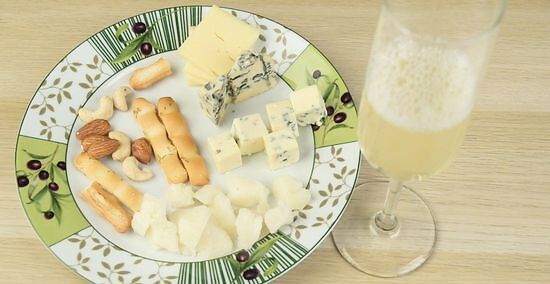
Know how to pair wines with cheese platters. When you have a platter filled with different types of cheese, it might be difficult to pick out a wine that works with all the different flavors. Any of the following wines work well with cheese platters. They also pair well with most types of cheeses: Alsatian Gewürztraminer Champagne Riesling, especially off-dry Sparkling wines, from dry to sweet
Pairing Cheese with Other Food

Try adding some fruit, but stay away from citrus. Most cheeses actually go well with sweet items, such as fruit. The next time you are eating or serving cheese, consider choosing two to three types of fruit to go with it. Try dried fruit with hard cheeses, such as apricots, cherries, and figs. Try fresh fruit with fresh cheeses, such as apples, dates, figs, apricots, grapes, and plums.
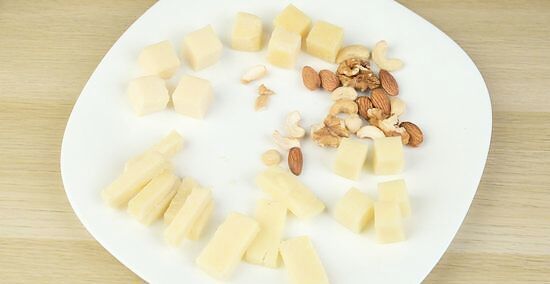
Try adding some nuts. They help bring out the sweet notes in cheese. Almost any type of nut pairs well with cheese, but many people seem to enjoy almonds, hazelnuts, walnuts and toasted pecans.
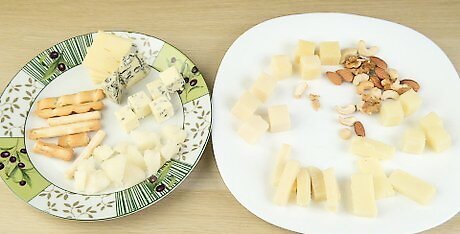
Consider eating or serving a variety of cheeses. Cheese does not have to be paired with just fruit, nuts, or wine. You can also pair different types of cheese together. The next time you are eating or serving cheese, consider pairing three to five different types of cheese, all with different textures and flavors. Just remember to start eating the mildest cheeses first, and work your way towards the sharper ones. For example, you could try: A soft, creamy cheese, such as Brie. A nutty, textured cheese, such as Comté. A dry, hard, aged goat cheese.

Try baking Brie with honey. Preheat your oven to 350°F (176.7°C). Line a baking sheet with parchment paper. Place a wedge or wheel of Brie on top of the parchment paper. Drizzle the cheese with some honey. If you want, you can top the cheese with other goodies, such as dried cranberries, figs, rosemary, thyme, or walnuts/pecans. Bake the cheese until it is soft, then serve immediately with crackers. Bake wedges for 5 to 7 minutes. Bake wheels for 8 to 10 minutes. Be aware that some ovens are more powerful then others, and can over or under bake your cheese
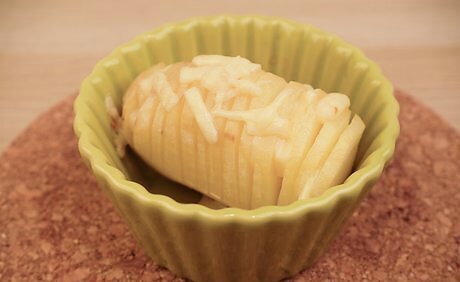
Experiment with adding grated or shredded cheese to your meals to make them more savory. Adding a handful of grated or shredded cheese to your meals can give them extra texture and a hint of flavor. Here are some ideas to get you started: Scrambled eggs and omelets Baked potatoes and mashed potatoes French fries (with Cheddar and bacon bits) Tortilla chips (Mexican cheese blend with sour cream and salsa) Salads (Caesar salad pairs well with Parmesan)
Eating Cheese at Formal and Informal Events

Consider the formality of the event and the texture of the cheese. Depending on how formal or informal the event is, there will be different etiquette expectations. How the cheese is served will also make a difference. This section will give you a few tips to help you prevent committing any faux pas.
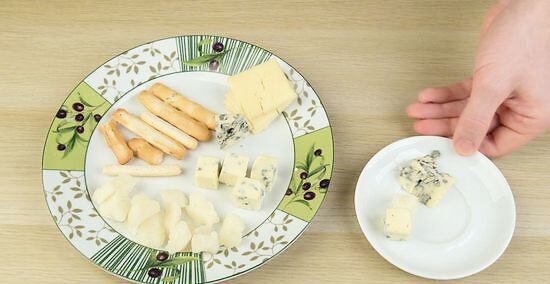
Know proper etiquette for formal events. Most formal events will supply small plates for guests. These plates are there for a reason. When you decide to go and sample some cheeses, take one of the plates with you. You will be loading the cheese onto your plate first.

Spread soft cheese onto crackers with a knife. Eat the cracker with your fingers, but take care to avoid touching the cheese. This is vital at formal events.

Use a toothpick to transfer hard cheeses from the serving platter to your plate. You can use a fork to eat the cheese directly, or you can place the cheese on a cracker first, then eat the cracker with your fingers. This is very important for formal events. If you see any crackers or fruit served alongside the cheeses, don't hesitate to pluck a few up and drop them onto your plate.
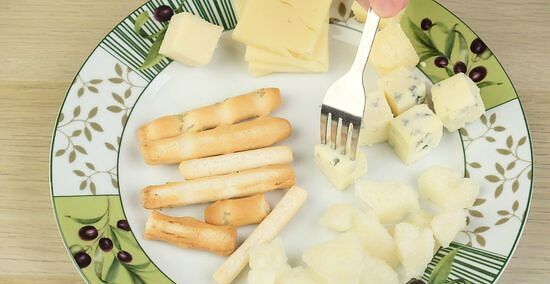
Eat sliced cheese with a fork if it is served alongside a meal, such as pie. If you are at an informal event, you might find cheese served alongside the rest of your meal. Simply eat it with a fork, and not your fingers.

Eat cheese with your fingers only if it is an informal event. If a cheese is cut into cubes and speared with toothpicks, eat the cheese with your fingers. If the cheese is cut into slices, transfer it to a cracker, and eat the cracker with your fingers.














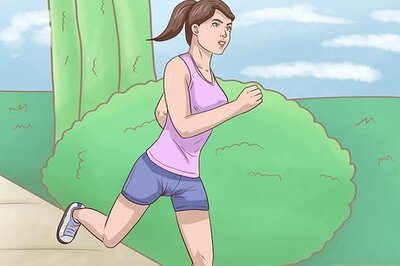
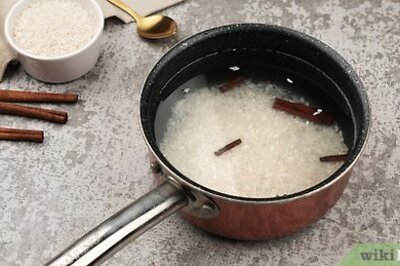



Comments
0 comment